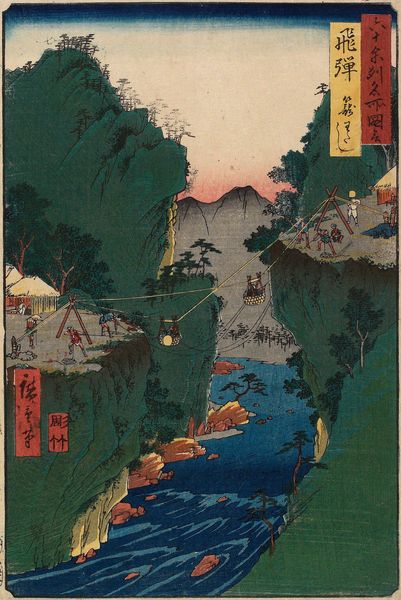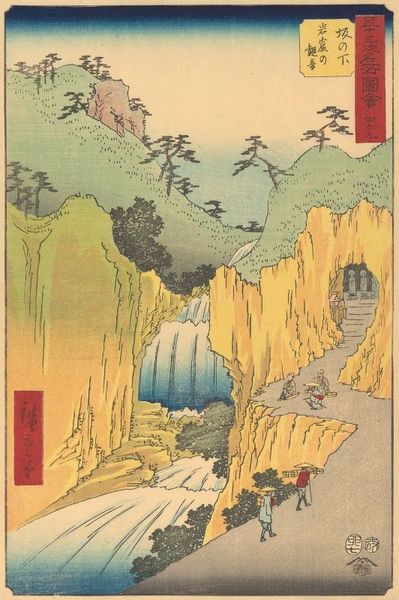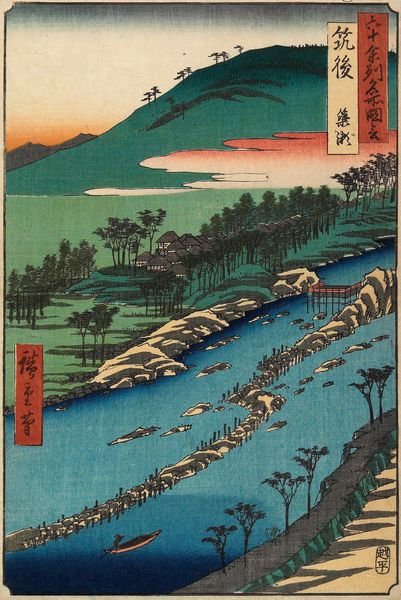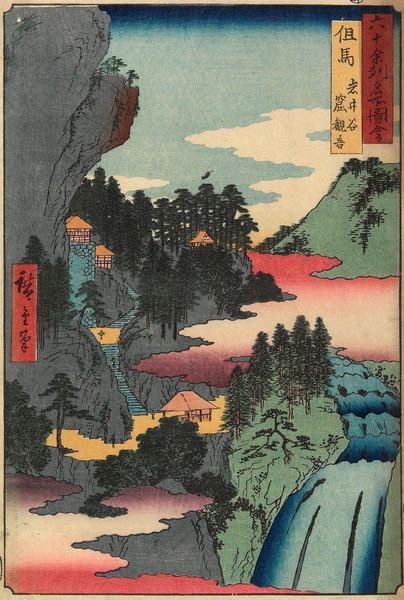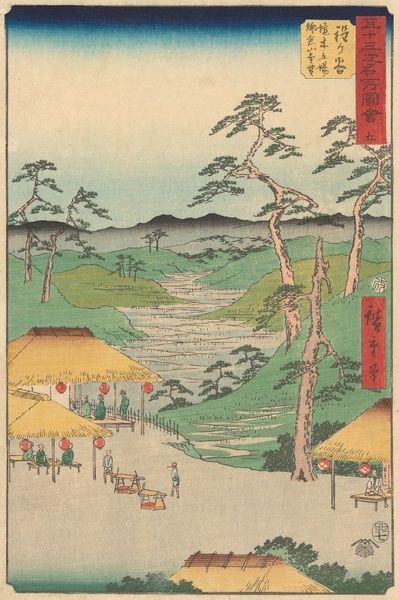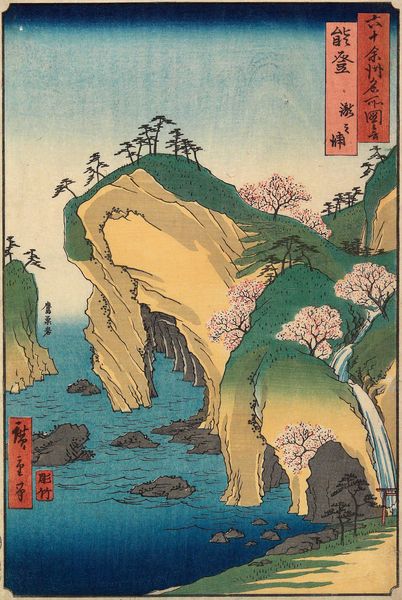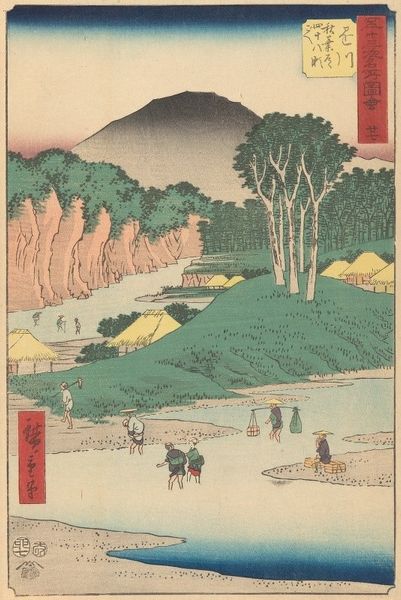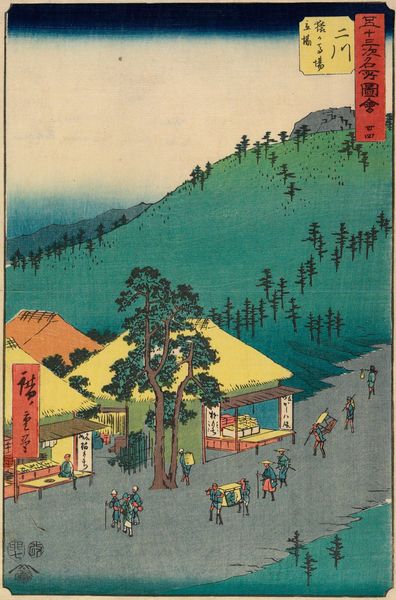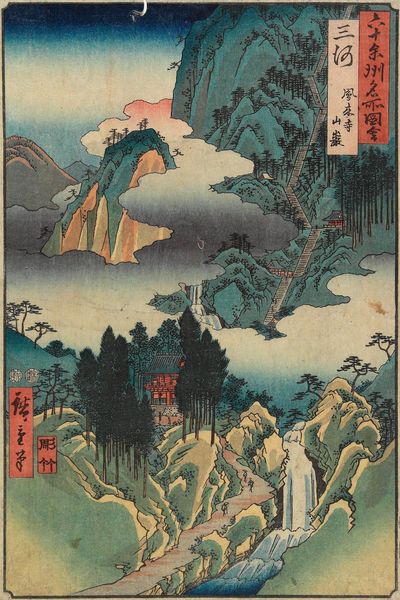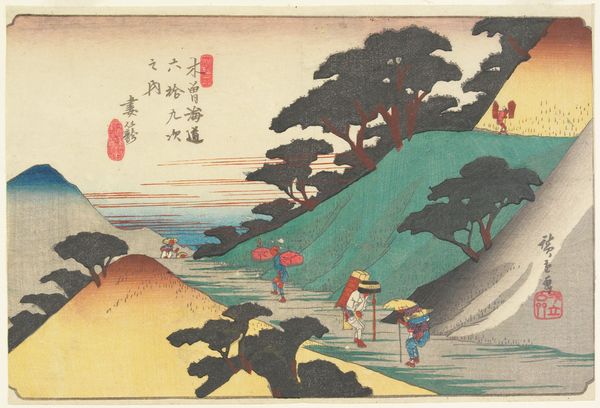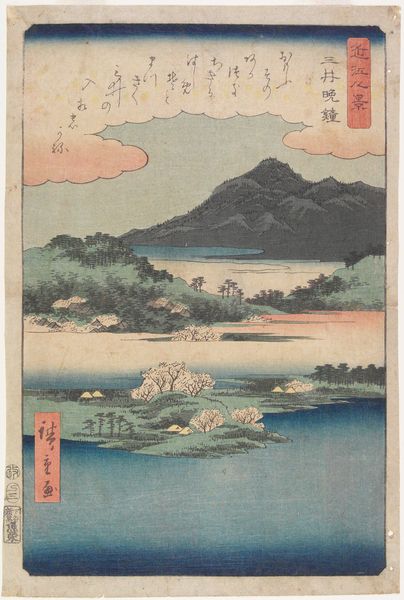
print, watercolor, ink, woodblock-print
#
ink painting
# print
#
landscape
#
ukiyo-e
#
watercolor
#
ink
#
woodblock-print
#
orientalism
#
watercolor
Dimensions: 13 1/2 × 8 3/4 in. (34.3 × 22.2 cm) (image, vertical ōban)
Copyright: Public Domain
Curator: Hiroshige's woodblock print, "Gold Mine," likely created sometime in the 1850s, captures a very particular slice of life. What strikes you first? Editor: It's got this peculiar tranquility. Even with what I assume are active mines, the colors are soothing, and the figures are tiny against the landscape's scale. A bit…melancholy, maybe? Curator: Interesting you say melancholy. It feels very different for me: I immediately notice the symbolic weight of labor and natural resources, the almost frantic pursuit of gold reflected in those little doorways carved right into the rock faces. The towering mountains versus those tiny, working figures highlights our relationship with the earth—using it but also being dwarfed by its scale. Editor: I get that. But it’s not the gold lust that grabs me. Those almost luminous yellow cliffs against the cool blues and greens…there’s this feeling of humans being almost swallowed by the scene, even as they’re changing it. Curator: Indeed. And there’s that ukiyo-e tradition shining through – the "floating world." Consider the pine trees clinging to the rock, a Japanese symbol of longevity, contrasting sharply with the fleeting nature of mineral wealth. Is the image about permanence, or about exploitation? Editor: Or both? The tension makes it really hum. Speaking of symbols, what do you make of the composition? This upward climb of cliffs, ending in distant, less defined mountain peaks… Curator: It reads to me almost like an altar. The gold mine, then, is the object of veneration in a secular age. And I guess the pilgrimage is…the daily grind. Is that too cynical? Editor: No, it sings! I can see how our personal longings – ambitions, financial necessities - translate into how we shape landscapes but perhaps more so, how they shape us. And for all we have read into Hiroshige's art, it remains open, ready to swallow another reading! Curator: Exactly. Whether it's about exploitation, ambition, or just a moment in time, “Gold Mine” reflects something profound back at the viewer. What we seek and how we seek it.
Comments
No comments
Be the first to comment and join the conversation on the ultimate creative platform.


